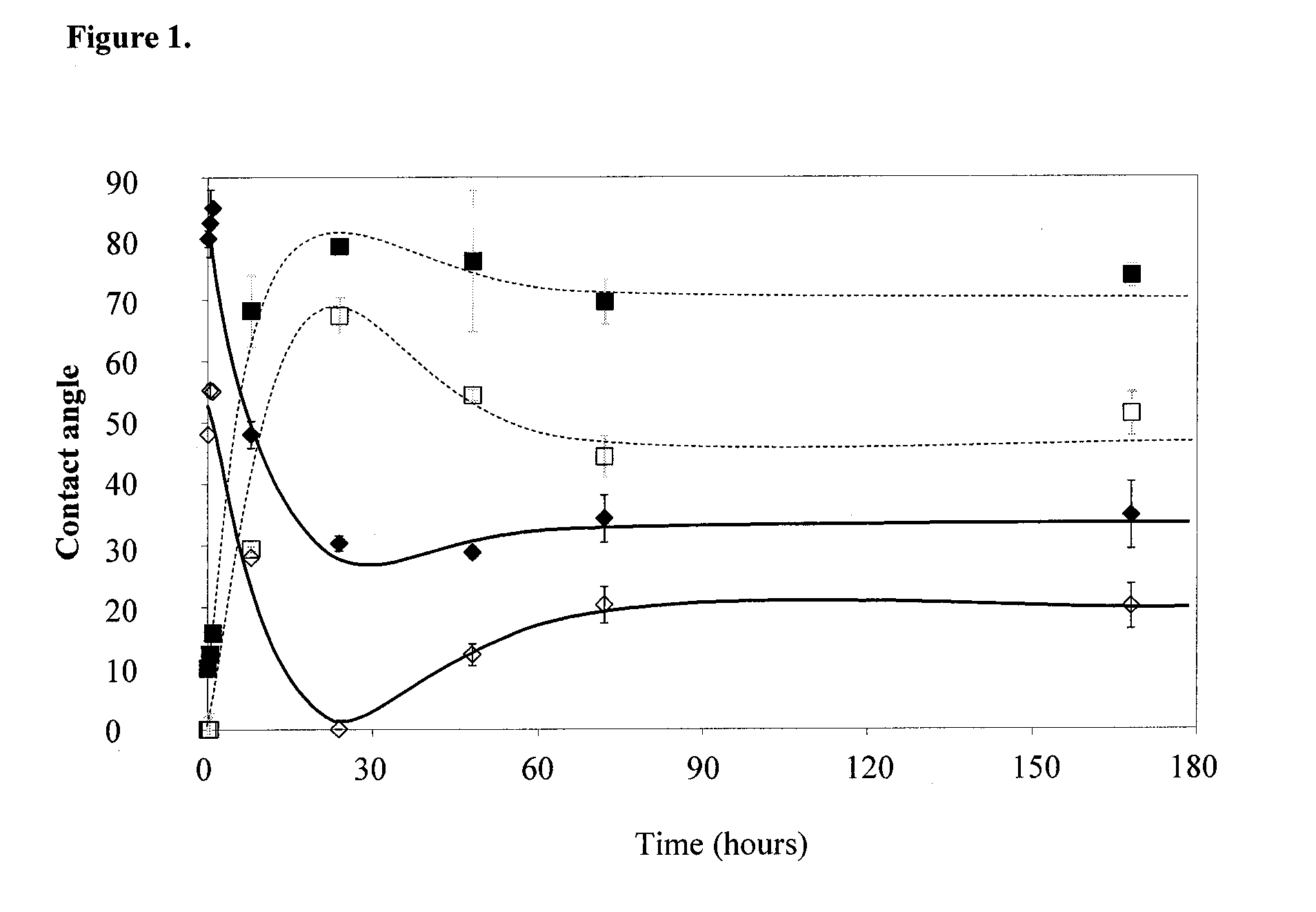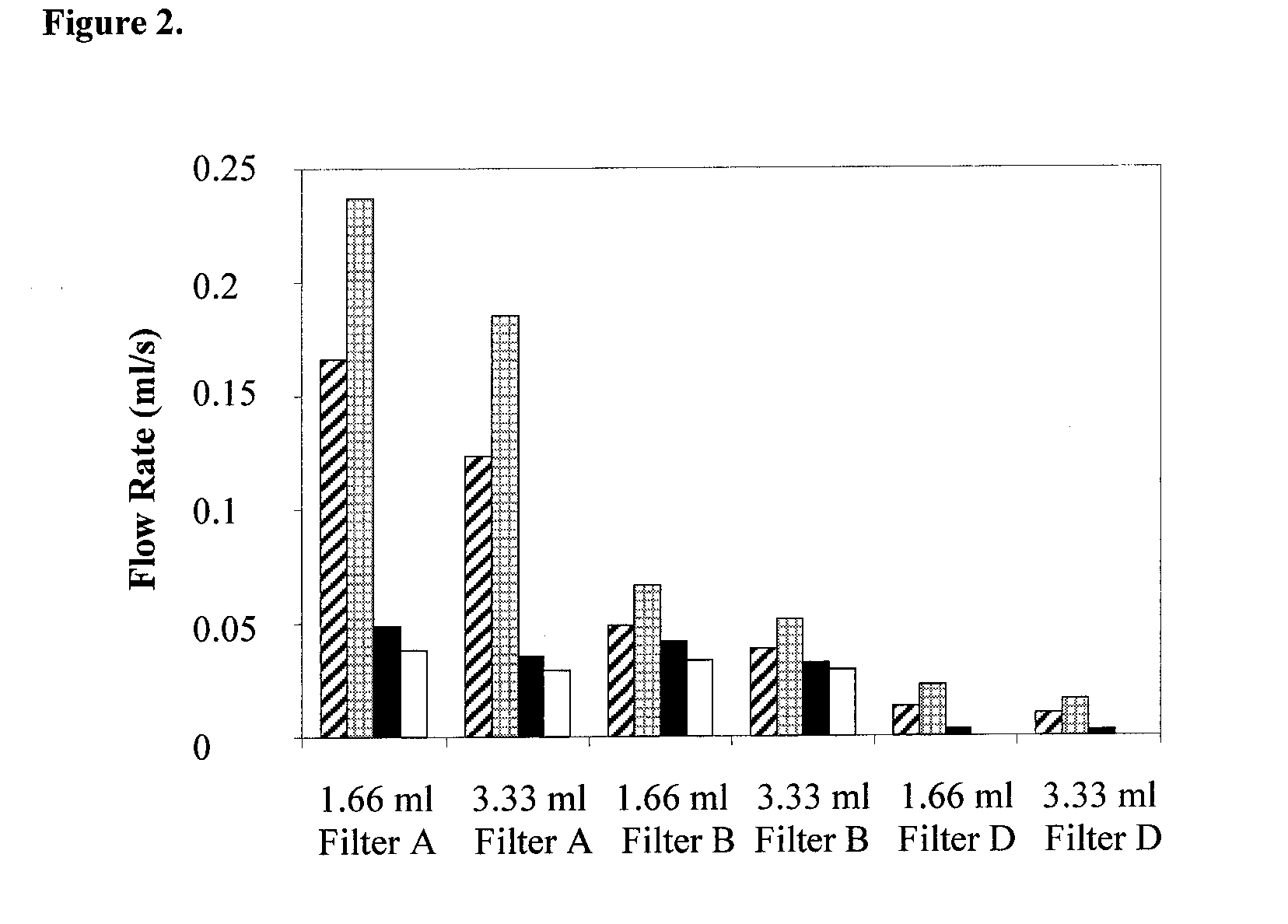Stimuli-Responsive Polymeric Surface Materials
a technology of polymeric surface materials and stimuli, which is applied in the direction of water-setting substance layered products, synthetic resin layered products, transportation and packaging, etc., can solve the problems of limiting potential applications, affecting device performance, and hydrophilic nature of resins
- Summary
- Abstract
- Description
- Claims
- Application Information
AI Technical Summary
Benefits of technology
Problems solved by technology
Method used
Image
Examples
examples
[0072]1. Materials. Glass fiber filter discs of three different pore sizes were purchased from Ace Glass. Discs were 8 mm in diameter and pore sizes were rated as 145-174 μm (A), 70-100 μm (B), and 10-20 μm (D). Glass tubing, 8 mm inner diameter, was also purchased from Ace Glass. Perfluorinated surfactants (f-PEG) were purchased from DuPont (Zonyl %) FSN-100 and Zonyl FSO). Zonyl %) FSN has a reported molecular weight of about 950 g / mol. The Zonyl %) molecule was characterized by DuPont as F(CF2CF2)yCH2CH2—O—(CH2CH2O)xH where y ranges from about 1-7 and x ranges from about 0-15. Based on the reported molecular weights, FSN was estimated as being primarily y=5 and x=9. Zonyl FSO has a reported molecular weight of about 725 g / mol. Perfluorinated surfactants were dried using MgSO4 in anhydrous toluene in a sealed nitrogen environment. The following monomers were purchased from Sigma-Aldrich and were purified using trap-to-trap distillation: methacryloyl chloride, methyl methacrylate, ...
PUM
| Property | Measurement | Unit |
|---|---|---|
| contact angle | aaaaa | aaaaa |
| contact angle | aaaaa | aaaaa |
| water contact angle | aaaaa | aaaaa |
Abstract
Description
Claims
Application Information
 Login to View More
Login to View More - R&D
- Intellectual Property
- Life Sciences
- Materials
- Tech Scout
- Unparalleled Data Quality
- Higher Quality Content
- 60% Fewer Hallucinations
Browse by: Latest US Patents, China's latest patents, Technical Efficacy Thesaurus, Application Domain, Technology Topic, Popular Technical Reports.
© 2025 PatSnap. All rights reserved.Legal|Privacy policy|Modern Slavery Act Transparency Statement|Sitemap|About US| Contact US: help@patsnap.com



